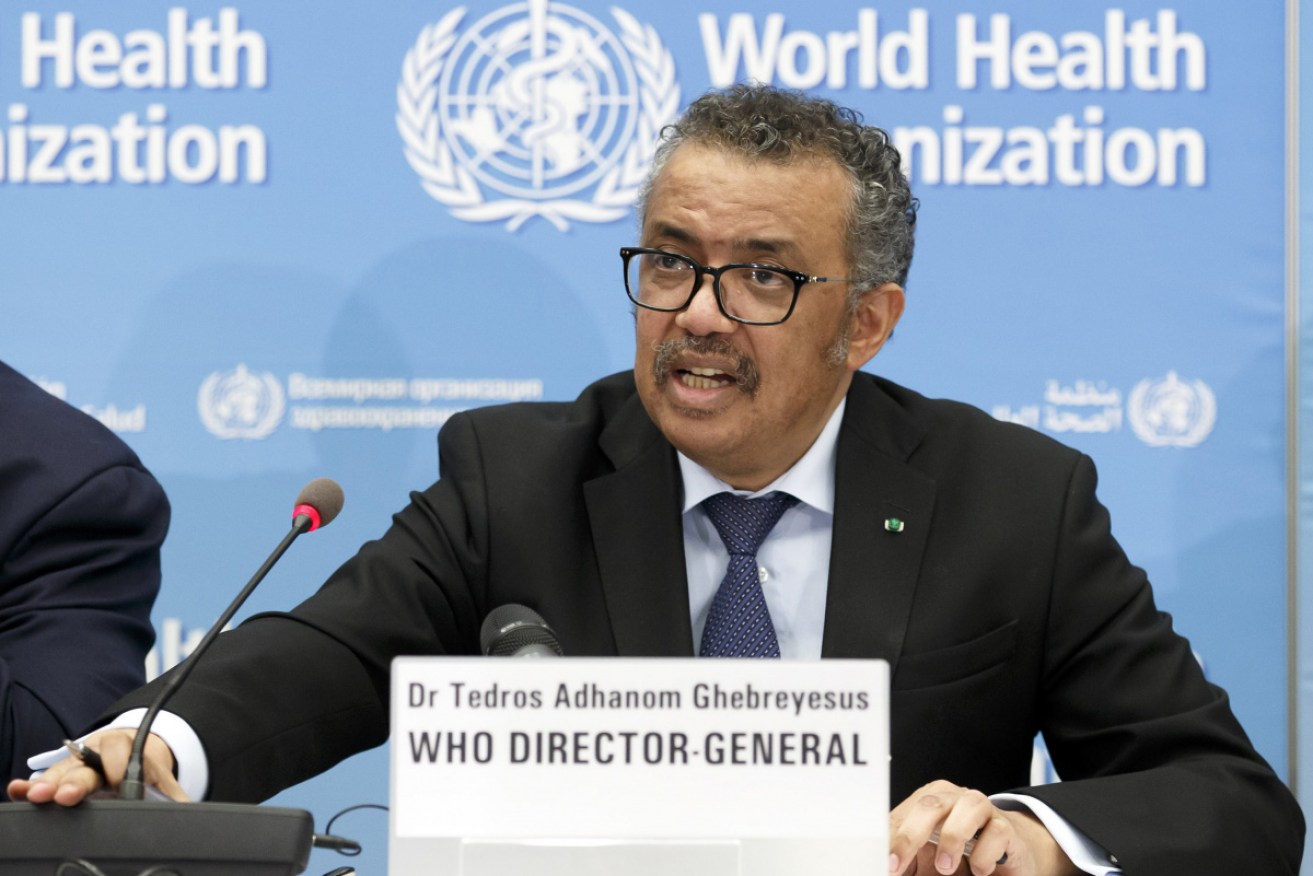WHO records highest single-day rise in coronavirus cases worldwide


WHO director-general Tedros Adhanom Ghebreyesus (centre) heads the global health emergency response over coronavirus. Photo: Getty
The world has recorded its highest single-day rise in coronavirus cases since the outbreak began, prompting the World Health Organisation to issue a stark warning: The pandemic is far from over.
WHO chief Tedros Adhanom Ghebreyesus reiterated that the outbreak would end when a vaccine is developed but until then countries needed to remain cautious.
He revealed during a media conference on Thursday morning (Australian time), that 106,000 new infections had been recorded in the past 24 hours – the most in a single day so far.
“Almost two-thirds of these cases were reported in just four countries,” he said, adding that “we still have a long way to go in this pandemic”.
The latest data from Johns Hopkins University shows there are 4.9 million coronavirus cases and 326,000 deaths worldwide.
- TND is tracking the virus numbers for you. Click here
The US leads the pack with 1.5 million confirmed cases, followed by Russia, Brazil and Britain.
“We’re very concerned about the rising numbers of cases in low- and middle-income countries,” Dr Tedros said.
Media briefing on #COVID19 with @DrTedros https://t.co/lLFk02u6yr
— World Health Organization (WHO) (@WHO) May 20, 2020
Relaxing restrictions
In Australia, the number of people contracting coronavirus every day continues to drop. But there were new cases detected in Victoria (8), NSW (4) and in Queensland (1) in the past 24 hours.
State leaders have continued to bicker over border closures, and on Wednesday one of the nation’s top medical officers weighed in to the debate.
Queensland has told its tourism industry to prepare for a likely September reopening of its state borders.
Western Australia, South Australia and the Northern Territory are also continuing border closures amid fears of a second wave of infections.
Deputy chief medical officer Paul Kelly said the national health advisory committee had made no decision nor offered advice on state border closures.
“The domestic borders were not part of our plan for control of this, either opening or closing,” Dr Kelly said.
“From a medical point of view, I can’t see why the borders are still closed.”
He said he understood, though, why leaders had done so when there were large numbers of new cases.
State leaders are holding firm on their hardline measures, with Western Australian Premier Mark McGowan saying he doesn’t “give a damn” if his stance frustrates political leaders on the other side of the country.
It might inconvenience the NSW premier and some people from the eastern states, but frankly, I don’t give a damn,’’
– WA Premier Mark McGowan
NSW is taking the opposite approach, announcing it will relax travel rules from June 1, with regional travel allowed for interstate visitors and residents.
Premier Gladys Berejiklian said the move would be an opportunity for her state as the tourism sector returned to life.
“NSW will welcome visitors from all across the country,” she said on Wednesday.
Meanwhile, Queensland chief health officer Jeannette Young flagged the possibility of borders remaining shut beyond September if infections weren’t controlled in other states.
Professor Kelly said there would almost certainly be more COVID-19 cases as the nation’s economy and society began reopening, but the system was designed to find them quickly and minimise the number of people in the chains of transmission.
“It may be some time for us to get four weeks without any cases in the larger states, so I hope that Queensland will take that into account,” he said.
Australian cases
There are now few cases outside Sydney and Melbourne and many of those are in people in hotel quarantine after returning from overseas.
South Australia and the ACT have no active cases, the NT has one but has not recorded a new infection in four weeks. Western Australia has four and Queensland 12.
South Australia will allow dining for up to 10 people in restaurants and cafes from June 5, three days earlier than planned.
The ACT will move to the second step of relaxing restrictions from May 29, allowing groups of up to 20.
There have been almost six million downloads of the coronavirus contract tracing app, with Victorian and NSW health authorities confirming they have used the data for the first time.
On Monday, Victoria’s tracers identified a positive patient who had the COVIDSafe app on their phone and allowed authorities to use the data.
The national death toll of 100 includes: NSW 49, Victoria 18, Tasmania 13, WA 9, Queensland 6, SA 4, ACT 3. (Two Queensland residents who died in NSW have been included in both state’s counts).
-with AAP








